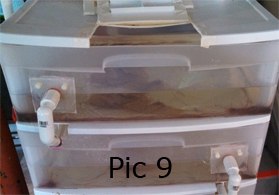|
|
 |
|
|
|
|
||
|
|
Fishkeeping Tips 13: Culturing Blackworms |
|
|
|
||
|
Continued
|
|
|
|
|
Blackworms
are one of the best live foods available in the hobby, and
farm-raised worms are See below for how
to maintain blackworms bought at the local fish store.
|
|
|
|
||
|
|
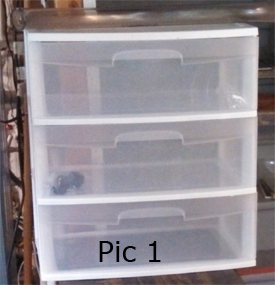 |
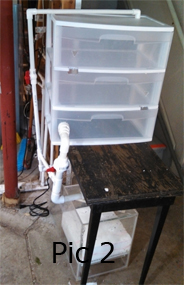
|
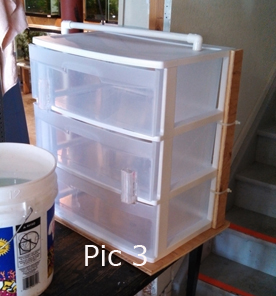 |
|
|
|
Pic 1- Begin
with a plastic Sterilite 3 drawer dresser. This one was bought
at a discount store in Seattle. Pic 2- A wet/dry filter is set up below and PVC is roughly in place to fill at the top while the bottom drawer drains down to the filter. An overflow escape line is put in to adjust flow (see pic 4). Notches are cut in drawers 2 and 3 to allow for drains to be put in, so that one drawer will drain down to the next. A bulkhead was created for the bottom drawer, connected to a line that drains to the filter. Drains and fills are always at opposite ends of each drawer from one another. Pic 3- The unit is not strong enough to hold 2-3 inches of water in each drawer without the structure buckling. So splints were added to the back sides with electrical ties for support, and the unit was placed on an even wood platform. The box is not attached to the base. An earlier type of drain can be seen on the 2nd drawer. The problem was that the two plastics could not be glued together without developing leaks, so the bulkhead idea (seen in Pic 5) was used instead. |
|
|
|
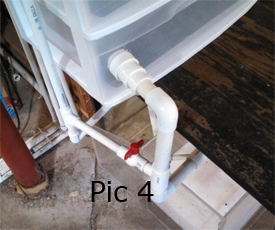 |
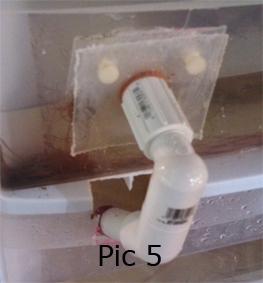
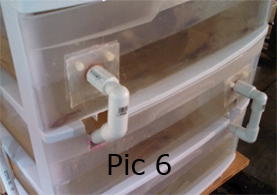 |
|
|
|
Pic 4- The
line down to the filter. An overflow escape line was put in
connecting the fill line from the sump |
|
|
|
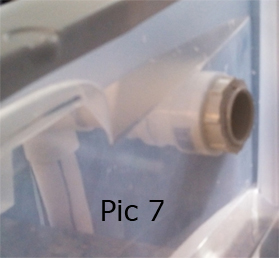 |
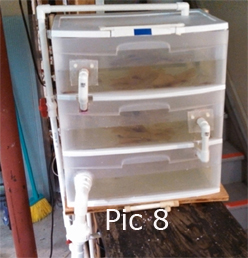
|
|
|
|
Pic 7- An inside
view of the bottom drawer bulkhead. Specific bulkheads can be
bought, this was
|
|
|
|
||
|
|
Update- After a few months of use,
here's how it has worked out: - Water changes
have been done by simply siphoning out the water in the three
drawers down to about |
|
|
|
||
|
|
How to Keep and Maintain Blackworms
Most Fish stores purchase their
worms from large farms that culture blackworms for the fish
hobby.
Within 2-4 days they will become vigorous and wiry with a dark
red color. I feed them to the fish
|
|
|
|
||
|
Home Contact Us Receiving Shipped Fish Keeping Select Aquatics Fish |
|
|
|
|
